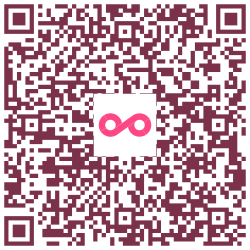My enthusiasm for learning about talk and interaction led me to enrol in a doctoral programme in education at the University of Luxembourg, Belval. Together with my supervisor, conversation analysis (CA) seemed the appropriate method to investigate discourses in collective inquiry and decision-making, based on the Bahá’í model of consultation, the provisional title of my PhD. CA, the study of talk-in-interaction, is the field that explores how we communicate and understand each other. As Elizabeth Stokoe, a British Professor of Social Interaction writes ‘we spend much of our days talking, we know little about the conversational engine that drives our everyday lives’, and ‘are pushed and pulled around by language far more than we realise’.
One model of conversation is used worldwide by over seven million. It is called consultation. Available to everyone, it is today practiced by Bahá’ís and their friends. Bahá’ís believe that throughout history, God has sent to humanity a series of divine Educators – known as Manifestations of God – whose teachings have provided the basis for the advancement of civilisation. One of the essential tools Bahá’ís use to translate these teachings into reality and action is consultation.
Bahá’í consultation claims to promote understanding and progress. It is an approach to collective inquiry that is unifying rather than divisive. Participants are encouraged to express themselves freely as they engage in discussion, yet take care to do so in a respectful and courteous manner. Detachment from one’s positions and opinions regarding the matter under discussion is imperative – once an idea has been shared, it is no longer associated with the individual who expressed it, but becomes a resource for the group to adopt, modify or discard. As consultation unfolds, participants strive to identify and apply moral principles relevant to the matter at hand1. As I myself am a member of the Bahá’í faith, it was important to me to be as critical as possible in my research.
By using CA, we gain insights into how we communicate. It can improve our relationships, resolve conflicts and help us design better technology. CA has three fundamental theoretical assumptions : (1) talk is action, (2) action is structurally organised and (3) talk creates and maintains intersubjective reality. The uniqueness of CA, however, is in the way in which it shows how ‘action’, ‘structure’ and ‘intersubjectivity’ are practically achieved and managed in talk and interaction.
As a PhD student in my second year, I started my research by contacting 103 groups that practice Bahá’í consultation. I have requested their willingness to participate in my research by recording a few of their consultations. Seven groups have so far responded positively and sent me one or more recordings.
My research question investigates the question of how participants find a solution to their problem, i.e., which methods they use to reach an agreement. At this stage in my research, I have collected a reasonable amount of data. I have started the transcription process, and will further engage in an unmotivated exploration of the data. Looking first at the data to only then discover relevant phenomena is a vital step in the research process. As it is too early to share any conclusive findings, let me outline a practical and applied example showcasing CA insights, relevant for practitioners.
When people call up companies to buy things, the call is mostly about what the caller wants. But the company also would like to know how the caller heard about them. After all, they’re spending money on advertising. Analysing conversations has shown that when salespeople ask the caller right at the start ‘how did you hear about us?’ this is followed by a long silence, which indicates trouble. But, when they wait just before the end of the call and ask, “just before you go, would you mind telling me where you heard about us?” they get an immediate answer. Being aware of such insights enables companies to optimise their calls.
We are pushed and pulled around by language. Conversation analysis encourages me as a researcher to find ways to actively engage others by taking a scientific approach to talk as a pervasive, structural feature of everyday lives. Motivated by the idea that religious convictions should submit to impartial testing by scientific methods, I am eager to explore what the method of conversation analysis can uncover about the Bahá’í practice of consultation.
1 https://www.bahai.org/documents/bic/transforming-collective-deliberation-valuing-unity-justice
Jean-Marie Nau is a language teacher and doctoral candidate in educational sciences, under the supervision of Prof. Dr. Patrick Sunnen at the University of Luxembourg. In his master’s degree, he explored learning processes within a collaborative study circle and applied a cultural-historical activity theory to individual and social transformation, under the supervision of Prof. Dr. Charles Max and the study director Assistant prof. Dr. Gudrun Ziegler at the University of Luxembourg in 2012.
Als partizipative Debattenzeitschrift und Diskussionsplattform, treten wir für den freien Zugang zu unseren Veröffentlichungen ein, sind jedoch als Verein ohne Gewinnzweck (ASBL) auf Unterstützung angewiesen.
Sie können uns auf direktem Wege eine kleine Spende über folgenden Code zukommen lassen, für größere Unterstützung, schauen Sie doch gerne in der passenden Rubrik vorbei. Wir freuen uns über Ihre Spende!
